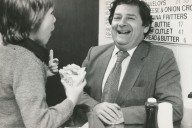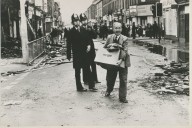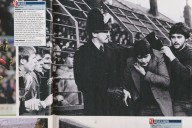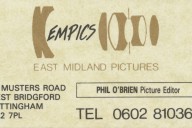
In the late 1990s, there was pressure within the sports photo industry from sports rights holders (the likes of the FA Premier League, the IOC and individual football clubs). These rights holders could not see the value of photography agencies and individual photographers being given free and unrestricted access to sports events. Rights holders got millions of pounds of revenue from TV broadcasters – but not a penny from the photographers who made money from supplying newspapers and magazines. The sale of Allsport (our competitor) to Getty Images for £30m in late 1997 didn’t help the case for continued unfettered access. Initially, rights holders imposed restrictions on use of images without permission – but there was a collision course that might have ended in access to events being denied.
As we looked at the strategy for EMPICS to survive as an independent sports photography agency, we needed to find a better position in the market.
We decided that a key element of this strategy was to build a product that was future-proofed by acquiring historical collections of sports photography. This was attractive, because there was a fixed cost of product (no on-going costs of staff photographers producing pictures daily) – and meant that our customers would still come to us for some of their needs.
Our first major acquisition was the photography of Peter Robinson. He was the Football League photographer from 1967 – and FIFA’s photographer from 1972. He had some exclusive football material – the most commercial sport in our portfolio. His collection was called The Football Archive and here are some examples of Peter’s pictures (these days available from the Press Association – who acquired EMPICS in 2004).
This had a strong feel of football in the 70s and 80s – but did not draw as many customers as we hoped. Clients wanted to have a “one-stop shop” for their football photography – so we needed to fill in the gaps pre-1970. This time we went out and acquired the rights for the sports photography in the Sport & General collection. This is the world’s oldest sports photography agency, established in 1897 – and although it had taken a direct hit during the 2nd World War, the picture collection was amazing. It covered not just football, but many other sports. The prize of the collection was the exclusive photography from Lord’s Cricket Ground up until 1972. Up to that point, cricket grounds had only allowed one photo agency to take pictures. It was a strange full circle – in that we were acquiring as we feared losing access to these sorts of venues. Here are some examples from Sport & General:
The acquired archives helped to generate closer links with our existing customers. The modern production was very “me too”, where everyone had a similar picture of Premier League footballers celebrating a goal. In contrast, the archives offered some unique moments in sporting history.
We also used the archive to cement our partnerships with sports rights holders – in particular around English football. We eventually used the archive to run print sales sites for more than 70 of the 92 professional clubs in the English Football Leagues.
My last “proper job” was in 1983-5. I was a photographer at the Leicester Mercury. It was one of the most enjoyable times of my life. Working within a community, making connections, then gradually gaining trust and respect is a rewarding process.
In 1981, I started my first job after school as a Trainee Press Photographer at Mercury Press Agency in Liverpool. I’d not bargained for my first week in employment to involve the coverage of some of the worst rioting on mainland Britain. I’ll always remember the phone ringing late at night after the family had […]
I lived in a council house on the ring road in Liverpool (Queens Drive) – and had very supportive parents (although I might not have thought so at the time). I went to a Catholic Boys’ Grammar School, St Francis Xavier’s – I and was very religious (up until the moment I was 18 – […]
In 1985, I was a 22-year-old press photographer in a well-paid and rewarding job at the Leicester Mercury. I had excellent colleagues – and a very comfortable life. However, it was not enough for me – and I wanted to work for National Newspapers and create my own business. So I set out to create […]
It’s amazing how easy it is to take and send high-quality photos these days. You can pick up an iPhone, take a snap and with a couple of clicks send the image around the world. It wasn’t always that simple – here’s a tale from 1985 (just over 25 years ago) when taking and transmitting […]
















